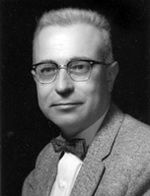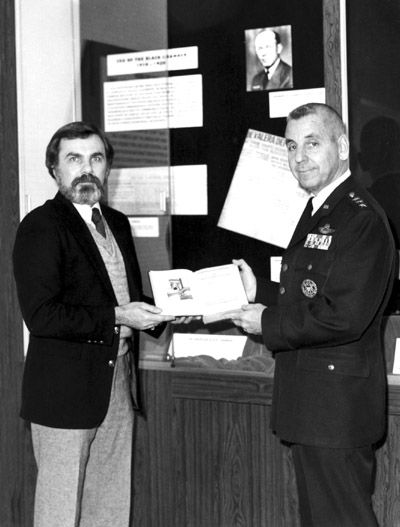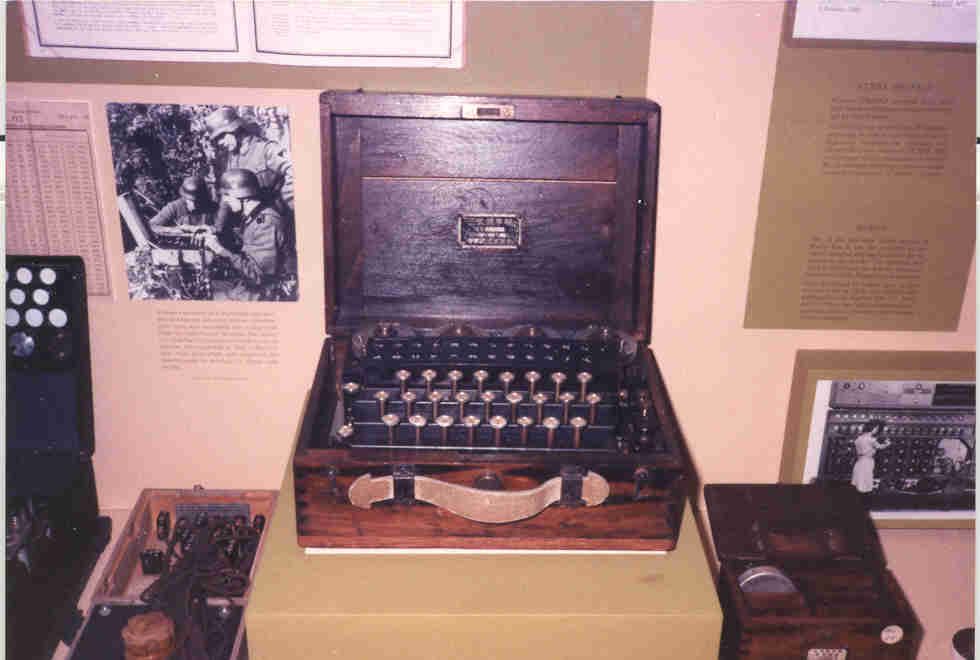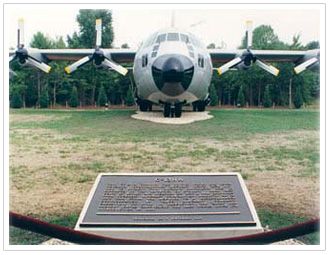It all began with some captured Axis cryptographic equipment.
One of the biggest keys to Allied victory in World War II...... to the defeat of fascism, Adolf Hitler, and the grisly goals of the Holocaust – was the work of allied cryptographers solving a Nazi cipher called, “Enigma.”
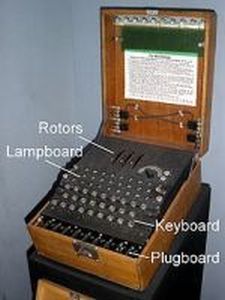
This was an immense accomplishment that essentially revealed Hitler’s playbook to the U.S. military. At war’s end U.S. forces rounded up approximately 450 Enigmas, but instead of saving them as precious artifacts of a signal accomplishment in world history, 400 of them were eventually tossed to the bottom of the Atlantic. As those machines slowly sunk so did a large and original portion of the story. Now there is far less opportunity for future generations to examine the ingenious engineering and complex electronics that were misapplied in the service of evil. Furthermore, fewer people will be able to see first hand, with the actual object, how the seemingly invincible can be defeated.
The Possibility of a Museum Grows
It was in fact captured Axis cryptographic equipment that became the basis for a small and little known Research and Development Museum collection (RDM) that was the NCM’s precursor.
When President Harry S. Truman created the National Security Agency in 1952, the RDM collection was passed on to new NSA caretakers: William F. Friedman and Lambros Callimahos (who set up his own makeshift office museum to share with special visitors).
These two pioneers helped to keep the growing cryptologic collection intact.
During the late 1970s and throughout the 1980s, curator Earl J. “Jerry” Coates, designed and placed exhibits in the lobby of NSA’s headquarters. These early "exhibits" included the Enigma cipher machine, NSA’s rare book collection, signals intelligence in the American Civil War, the Radio Intelligence Service of 1918-1919, cryptologic support for D-Day, and more.
The success of the exhibits inspired Coates to campaign for establishment of an actual museum for NSA.
In 1981 NSA partnered with Smithsonian to create an exhibit on early 20th Century and World War II ciphers. It was the first time the Agency ever ventured out into the public arena. In 1987 NSA loaned Smithsonian one of the last U.S. Navy cryptanalytic Bombe machines used to recover Enigma keys in World War II.
In 1989 NSA established an actual Center for Cryptologic History (CCH) on its campus, and momentum began to grow for a formal museum.

Colony 7 Motel

When the old Colony 7 Motel adjacent to NSA was purchased in the spring of 1990, Vice Admiral William O. Studeman, then-Agency director, was the first to suggest it be used as an NSA-operated museum.
By September the Senior Facilities Council agreed. Jerry Coates took the lead and in November 1991, Jack E. Ingram, a senior instructor at the National Cryptologic School, joined Coates as his assistant. Eventually, Ingram ascended to the curator’s role.
As the main building was renovated, Coates and Ingram worked in an old motel room and plotted how they would turn a former restaurant and dinner theater into a credible museum.
Working conditions were less than ideal, with no budget for exhibits or showcases. Graphics came from NSA’s stable of designers, and exhibit cabinets were heisted from the Smithsonian Museum of African Art and the Historical Electronics Museum.
The curators had to swing hammers and protect their creations from falling sawdust and grease on the construction site.
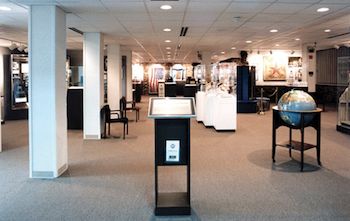
The main exhibit room as it looked in July 1993. Photo courtesy of Jack Ingram.
July 1993 -The Museum Opens its Doors
Nevertheless, the museum opened to NSA employees and their families and other members of the intelligence community on July 13, 1993. The public opening was a little less than grand. Not even a press release was issued and attendance yawned.
The Washington Post eventually wrote a front-page piece about the Museum, parodying the Agency’s timid foray into the spotlight. Headlined, “Only Sleuths Can Find This Museum,” the piece ended memorably: “Some at NSA say you can reach the museum at (301) 688-5849. Others at NSA deny that number exists.”
However, the initial months were used to fine-tune exhibits and to get used to giving tours and answering questions.
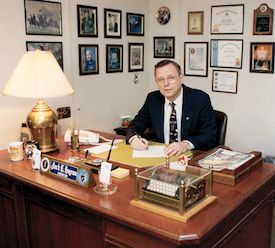
Jack Ingram - previous NCM curator
Click the image to view his article about the NCM's history via the CIA.gov online library
The Museum finally opened to the public in December 1993. After that, media interest and attendance boomed. Requests for interviews poured in and stories appeared in outlets all over the world. About 10,000 visitors stopped by that first year, a remarkable number considering the museum’s furtive beginning. Soon the museum was capturing the public imagination and becoming more popular, but it still struggled to find its professional footing. Staff was minimal with NSA retirees conducting the tours.
As curator Jack Ingram (pictured here) experienced so much of the NCM's history, he wrote a thorough article titled, "The Story of the National Cryptologic Museum: Ensuring the Legacy," the entirety of which is available via the CIA's online library. His article includes reflections on interesting events that took place at the NCM, as well as interactions with special visitors. Told from his uniquely personal perspective, it's well worth the read! Excerpts of his original article and some of his photos are also utilized on this page.

In March 1996 Lieutenant General Kenneth A. Minihan, USAF, was named NSA director. He had a keen interest in history, and quickly requested a museum tour. His first thought was to give the entire building to the museum (half of it was still used as a conference center). Viewing the wall that separated the museum and conference center, he asked: “Is this thing load bearing?” It wasn’t. “Then let’s take it down,” he said.
“You now own this building,” General Minihan told the curator, and six weeks later major renovations commenced.
The Museum Foundation is Formed
For the next three years museum exhibits increased dramatically, and the facility hosted about 30 directorate-level functions per year, and visitation climbed. It was also during this time period that Major General John E. Morrison, USAF retired, formed the National Cryptologic Museum Foundation.
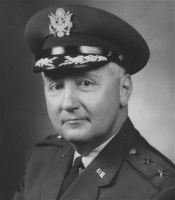
A significant figure in the history of intelligence, General Morrison recruited an extraordinarily distinguished board of directors for the Foundation - to help procure the Museum’s artifacts and provide informative cryptologic programs.
The Popularity and Visibility of the Museum Grows
In September 1997, at the initiative of the US Air Force, active and retired, and ably supported by the Foundation, “National Vigilance Park” was dedicated near the Museum. Its center-piece is an actual C-130 aircraft, painted and displayed in commemoration of an electronic reconnaissance plane shot down over Soviet Armenia in September 1958, during the Cold War. Subsequently, Army and Navy aircraft, representative of their involvements in Cold War reconnaissance operations were added to the Park, expanding the Museum complex, which displays related interpretative displays and material. (National Vigilance Park was dismantled in 2017 pending plans for new construction. It's future status is unknown at this time.)
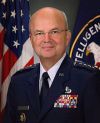
When Lieutenant General Michael V. Hayden, USAF, became NSA director in March 1999, his vision was to use the museum as a public relations asset for the Agency.
Patrick Weadon took over the curator’s job at the end of 2004, and increased visitation to its highest levels, more than 60,000 people per year. Many prominent Americans have clicked the turnstiles at the National Cryptologic Museum, including Apollo 13 astronaut, James Lovell, novelist Tom Clancy, actors Richard Dreyfus and Ed Begley, Jr., author and scientist Carl Sagan, prominent Senator Daniel Patrick Moynihan, and Pittsburgh Steelers owner Dan Rooney, just to name a few. More recently, the director of The Imitation Game film visited, as did author Andrew Hodges, whose book, "Alan Turing: The Enigma," inspired the film.
The story of the museum is the tale of a tenacious few who persevered so that the heroic though silent accomplishments of America’s cryptographers would never be lost.



